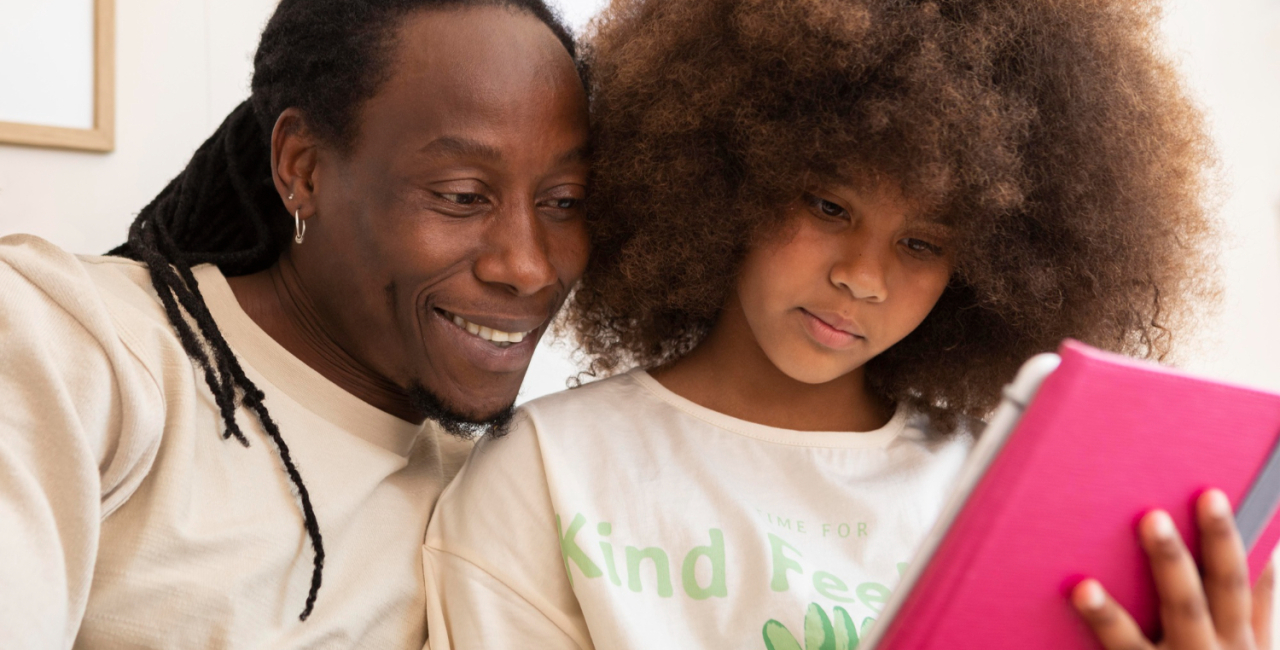Did you know that children who are read to daily are exposed to nearly 1.4 million more words by the time they start school than children who aren’t? That is according to a study in the US, and it is a powerful reminder about the power of reading.
For many parents, reading is often thought of as something that benefits learning, and it absolutely does, but it can also become one of the most meaningful ways to bond with your child.
The good news is you don’t need to be a perfect storyteller, but with a few intentional habits you can turn reading from a routine into a shared experience that strengthens your relationship with your child.
Here are three simple, practical ways to bond with your child through reading.
1. Make Reading a Shared Ritual, Not a Task
Reading should be more than another item to tick off the to-do list. When it becomes a shared ritual, it turns into something both you and your child look forward to.
Create a cozy atmosphere that signals “this is our reading time.” It could be snuggling under a blanket, sitting in a favourite chair, or turning off the lights and using a small lamp to make it feel special.
Even just 10 to 15 minutes a day can make a big difference. What matters most is consistency. Over time, this regular rhythm becomes something your child relies on, a moment where they have your full attention, away from screens and distractions.
Keep it simple. You don’t need to have a new book every week. Re-reading old favourites can be just as meaningful because children love the familiarity and comfort of stories they already know.
2. Let Your Child Lead Sometimes
One of the easiest ways to make reading more meaningful is to let your child take the lead once in a while. This works especially well for older children. When children have a say in what and how you read together, they feel more involved, and that sense of ownership makes the experience richer for both of you.
Start by giving them the freedom to pick the book. It might be the same book for the tenth night in a row. Repetition helps children build confidence, and familiar stories often lead to deeper conversations over time.
As you read, follow their pace. Some children like to pause and ask questions. Others want to flip back and forth between pages or spend time examining the illustrations. Resist the urge to rush. Those little detours are part of how they connect with the story.
For younger kids, “leading” can mean describing what they see in the pictures or filling in familiar lines from memory. For older children, it might mean reading a page or chapter aloud to you.
You can also switch roles occasionally and let them be the “reader,” even if they can’t read all the words yet. They might tell the story in their own words, which not only builds language skills but also makes them feel proud of their contribution.
3. Bring Stories to Life with Voices and Actions
Children love it when stories feel alive, and one of the simplest ways to make that happen is through your voice and expressions. You don’t need to be a professional actor; even small changes in tone or facial expressions can make a big difference.
Try giving each character a distinct voice. It could be a gruff bear, a squeaky mouse, or a slow, thoughtful giant. Exaggerate your expressions during exciting or suspenseful parts. Whisper during quiet moments, stretch out words for dramatic effect, or make playful sound effects when something funny happens.
You can also bring your child into the fun. Encourage them to mimic a character’s voice, make animal sounds, or act out a scene with you. If you are reading a book about a lion, give your best roar and let them try theirs. If a character tiptoes through a dark forest, both of you can sneak around the room together.
These little touches help children connect emotionally with the story. Acting things out also improves their comprehension because they are actively engaging with what is happening, not just listening passively.
Extend the Story Beyond the Book
One of the best ways to deepen your bond with your child is to carry the story into real life. This helps children connect what they read with the world around them and creates opportunities for shared experiences that stick.
You could also draw or paint a favourite scene from the story, make a craft inspired by a character, or even cook a simple meal that was mentioned in the book. Some children enjoy retelling the story in their own words, perhaps through a puppet show, a mini performance, or just by explaining it to a sibling.
Over time, these shared moments become the quiet heartbeat of your relationship.


